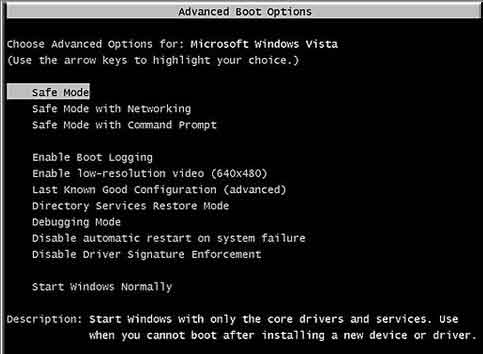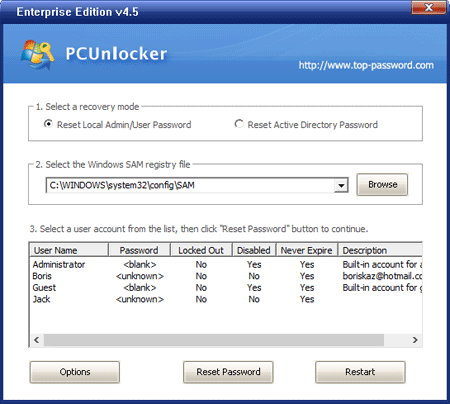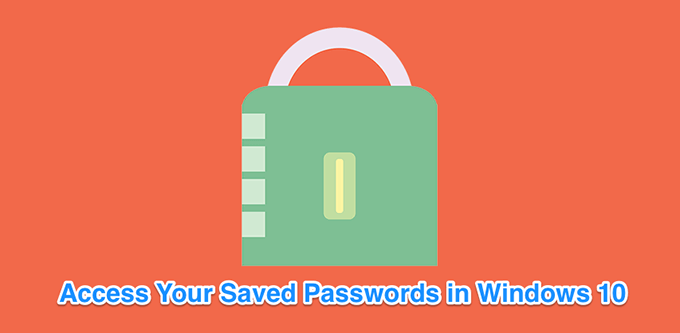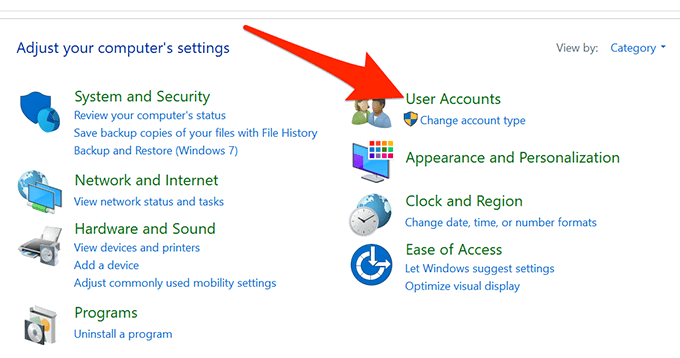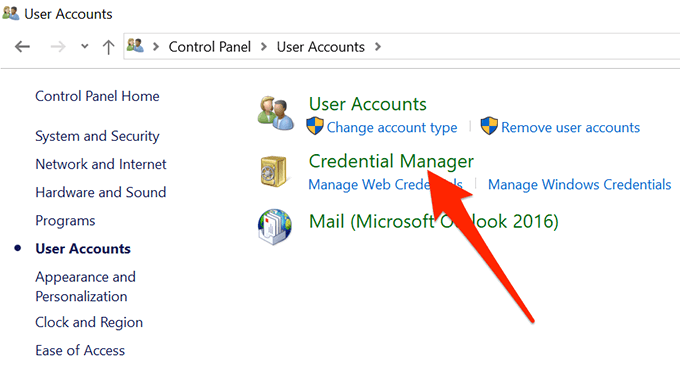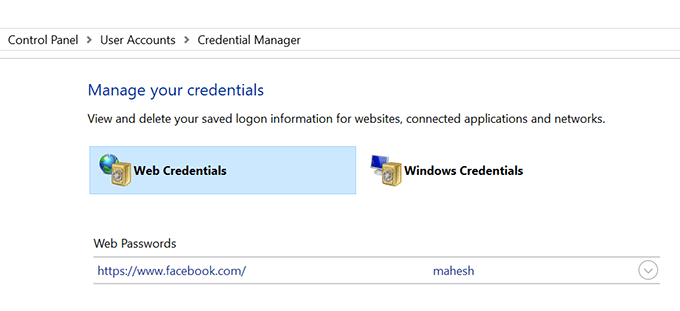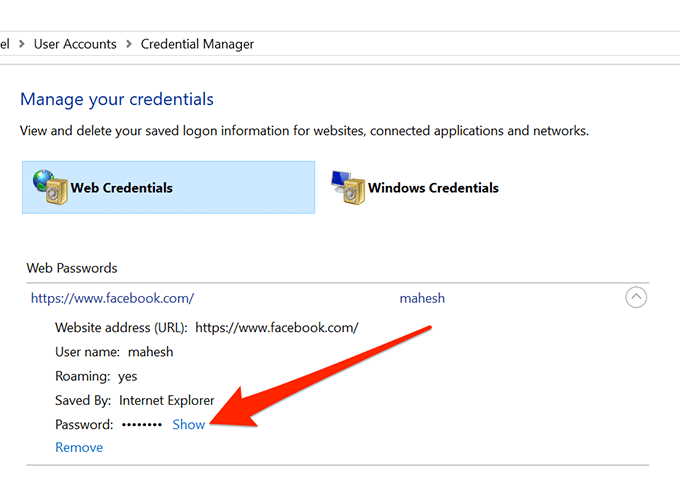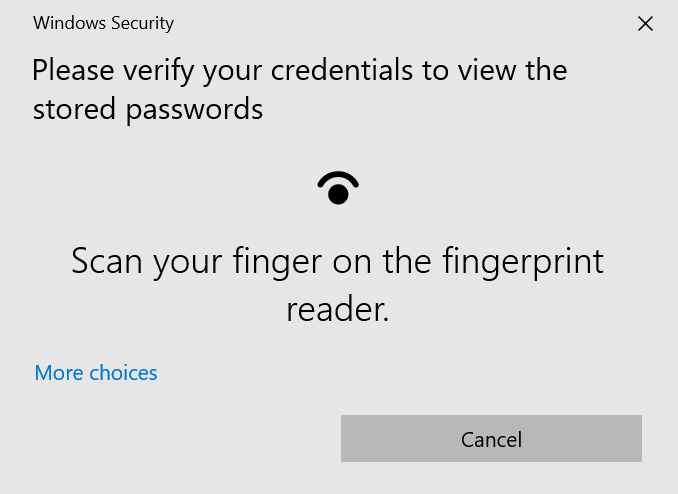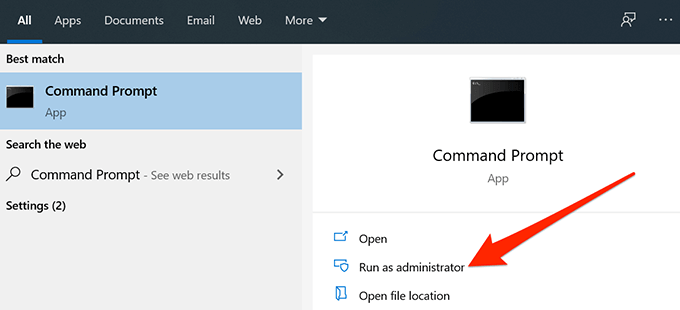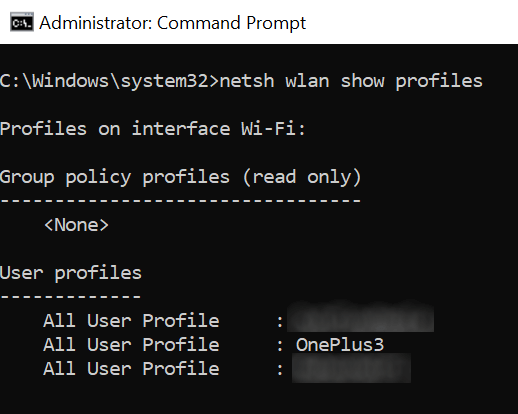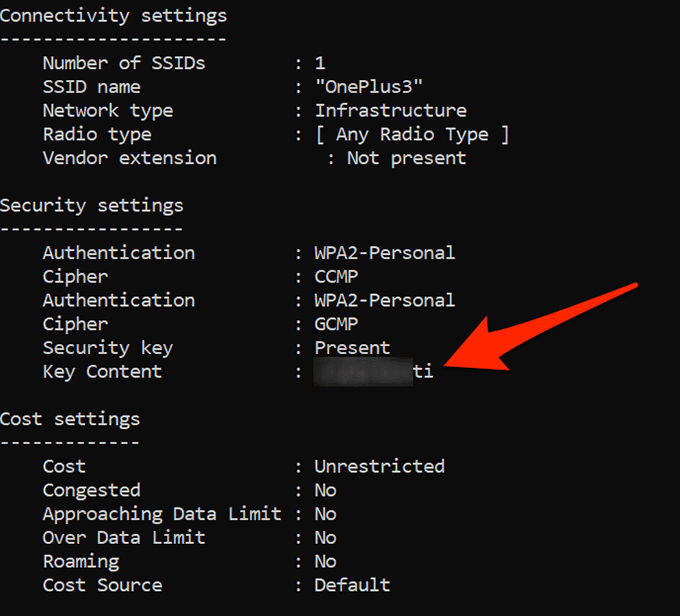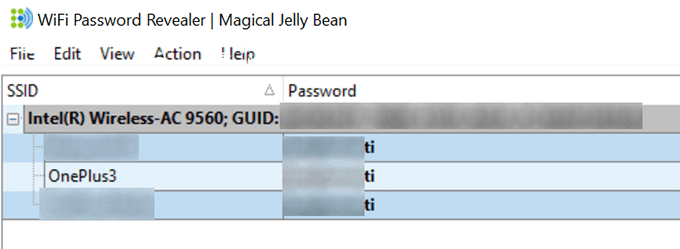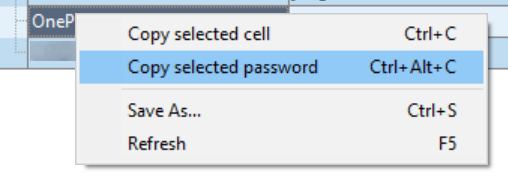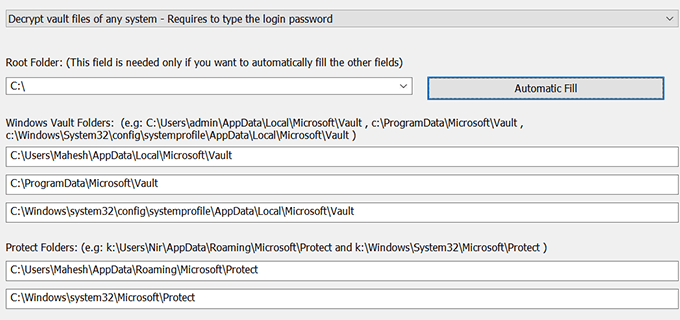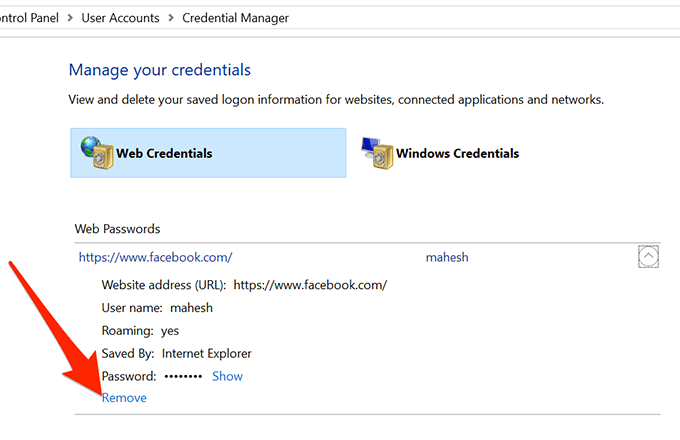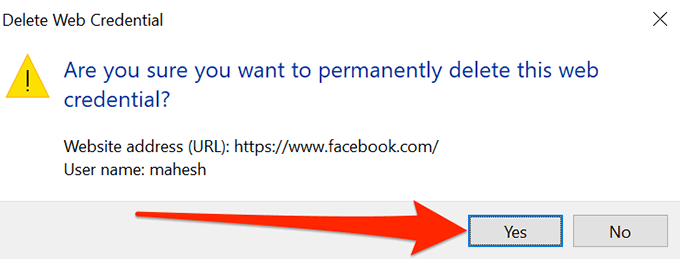- Quick Ways to Get into Windows If Forgot My Windows Password
- Method 1: Reset Windows Password in Safe Mode
- Method 2: Reset Windows Password Using Password Reset Software
- How to Find Hidden & Saved Passwords in Windows
- View Windows Saved Passwords Using The Credentials Manager
- View Saved WiFi Passwords On Windows 10
- Use Command Prompt To Reveal Saved WiFi Passwords
- Use An App To Access Saved WiFi Passwords
- View Windows Vault Passwords Using An App
- Delete Saved Passwords On Windows 10
- Change or reset your Windows password
- If you already know your current password and want to change it
- Reset your Windows 10 local account password
- Windows 10 version 1803 and later
- Windows 10 before version 1803
- Reset your Microsoft account password you use to sign in to your computer
- Troubleshoot problems signing in
- Reset your password
- More help with passwords in Windows 8.1
- Reset your password
- My computer is in a workgroup
- Change your password
Quick Ways to Get into Windows If Forgot My Windows Password
«Actually I forgot my Windows password. So, i would like to know how to log into my user account. I neither have any password reset disc nor want to re-install Windows again. Please help. Its urgent.»
This would be simple if you have created a Windows password reset disk before you forgot Windows password. Another way of getting into Windows is to recover Windows password using Ophcrack or Cain & Abel, but these free password cracking software are not easy to operate, and may take several hours or a few days to crack your password if it’s complicated.
How to access your locked computer if you need to use the computer urgently? Here I’ll show some quick ways to help you get into Windows when you forgot Windows password.
Method 1: Reset Windows Password in Safe Mode
On Windows, there is a hidden account named Administrator. Most of the time, this account has no password set. That means that you can start your computer with this account, open the Control Panel to delete or change the password of any users and fix your problem.
Boot your computer and immediately press on the F8 key repeatedly until your computer displays the boot menu.
Method 2: Reset Windows Password Using Password Reset Software
Comparing with free password cracking software, Windows password resetting software is much more easier and effective. With the PCUnlocker utility we can instantly reset lost or forgotten passwords on any Windows systems, including both 32-bit and 64-bit OS.
- Download the self-extracting Zip file of PCUnlocker package.
- Uncompress the package, there is a ISO image: pcunlocker.iso . Burn it onto a CD/DVD or USB flash drive.
- Boot your locked computer from the newly burned CD/DVD or USB flash drive.
- Wait until the boot process is finished. When a window pops up with all your Windows user accounts, select the target one to reset the password you forgot.
Re-installing Windows is always an option, but we consider it as a last resort. It’s recommended to backup all important data and files before formatting your hard drive.
How to Find Hidden & Saved Passwords in Windows
They may end up in the registry, within credential files, or within the Windows Vault
If you’ve forgotten a password but you know it was saved somewhere on your computer, you can access your Windows saved passwords and see if it’s there. Windows actually keeps a list of all of your saved passwords and lets you access them when you want.
These saved passwords are from your web browsers, WiFi networks, and other services that you use on your computer. Revealing these passwords is fairly easy as there’s a built-in tool on your computer that lets you do it.
View Windows Saved Passwords Using The Credentials Manager
The feature that saves your login details on your Windows 10 computer is called Windows Credentials Manager. It keeps a track of all of your web as well as other Windows passwords, and lets you access and use them when needed.
The web passwords that it saves are usually from Internet Explorer and Edge. Your Chrome, Firefox, and other web browsers’ passwords won’t appear in the tool. For those browsers, you can check out their settings menu to find and access the option that shows your passwords.
- Search for Control Panel using Cortana search and open the panel.
- Click on the option that says User Accounts as the option you’re looking for is located there.
- On the following screen, click on the option that says Credential Manager to open the tool on your computer.
- When the Credential Manager opens, you’ll see mainly two tabs called Web Credentials and Windows Credentials.
The Web Credentials section hosts all of your browser passwords. These are the passwords that you use to log-in to various websites.
The Windows Credentials stores your other passwords, such as your NAS drive password, and so on. Unless you’re in a corporate environment, you likely won’t use this section.
- To reveal the password for an entry, click on the down-arrow icon next to it. Then, click on the link that says Show next to Password.
- It’ll ask you to enter your Windows account password. If you use a fingerprint to unlock your machine like I do, you’ll be prompted to scan it to continue.
- It’ll then immediately display the password on your screen.
View Saved WiFi Passwords On Windows 10
The Credentials Manager, unfortunately, doesn’t let you view your saved WiFi passwords. However, there are two other ways you can use to access the Windows saved passwords for your wireless networks.
These methods should let you access passwords for all the WiFi networks you’ve ever connected to.
Use Command Prompt To Reveal Saved WiFi Passwords
The Command Prompt utility lets you perform a number of tasks on your computer, and one of these is to let you view your saved WiFi passwords. It can be used to retrieve a list of all of your networks, and then you can choose the network you want to view the password for.
You’re basically going to just copy and paste the commands, so even if you haven’t used the tool before, you should still be fine.
- Search for Command Prompt using Cortana search and click on Run as administrator.
- Type in the following command into the Command Prompt window and press Enter. It’ll show the WiFi networks it has saved passwords for.
netsh wlan show profiles
- Note down the WiFi network name you want to find the password for.
- Type in the following command replacing NAME with your WiFi network’s name and hit Enter.
netsh wlan show profile name=NAME key=clear
- Look towards the section that says Security settings. Here, you’ll find an entry saying Key Content. The value next to it is your WiFi password.
Use An App To Access Saved WiFi Passwords
If you need to access your saved WiFi passwords too frequently, the command line method isn’t ideal for you as it requires you to type in a command each time you want to view a password. A better option would be to use a third-party app that lets you easily and quickly reveal your Windows saved passwords.
One of these apps is WiFi Password Revealer by Magical Jelly Bean. It’s a free app you can use on your Windows 10 computer to view your WiFi passwords.
- Download and launch the app on your computer.
- It’ll immediately scan and display all the WiFi passwords it could find on your screen.
- If you want to copy a password, right-click on it in the app and select Copy selected password.
View Windows Vault Passwords Using An App
Some of the Windows saved passwords are stored in Windows Vault on a Windows 10 computer. If the password you’re looking for is located there, then you can use a free app to find and reveal it on your machine.
There’s an app called VaultPasswordView that lets you access all the passwords saved in the Windows Vault on your machine.
- Download and launch the app on your machine.
- Use the Root Folder dropdown menu to select your root folder. Then click on the Automatic Fill button to auto-fill some of the options on the screen.
- Enter your account password in the Windows Login Password field and hit OK.
- You should be able to view your Windows Vault saved passwords.
Delete Saved Passwords On Windows 10
Since your computer saves most passwords that you use on your computer, it may even have the passwords that you don’t actually use. If you want, you can delete these saved passwords on your Windows 10 computer.
These can be deleted from the Windows Credentials Manager on your PC.
- Launch Windows Credentials Manager from Control Panel.
- Click on the arrow icon next to the password you want to delete.
- Select the option that says Remove at the end of your credential details.
- It’ll ask if you’d really like to remove the password from your computer. Click on Yes to continue.
It’s easy to forget passwords especially if you have a lot of those to remember. Are you someone who needs to look at the saved passwords to log in somewhere or do you remember all of your passwords? Chime in in the comments below.
Mahesh has been obsessed with technology since he got his first gadget a decade or so ago. Over the last few years, he’s written a number of tech articles on various online publications including but not limited to MakeTechEasier and Android AppStorm. Read Mahesh’s Full Bio
Change or reset your Windows password
If you forgot or lost your password for Windows 10, Windows 8.1, or Windows 7, you may be able to change or reset it. To get started, choose your version of Windows from the Select Product Version drop-down menu.
If you already know your current password and want to change it
Select Start > Settings > Accounts > Sign-in options . Under Password, select the Change button and follow the steps.
Reset your Windows 10 local account password
If you’ve forgotten or lost your Windows 10 password for a local account and need to sign back in to your device, the below options might help you get up and running. For more info on local standard vs. administrative accounts, see Create a local user or administrator account in Windows 10.
Windows 10 version 1803 and later
If you added security questions when you set up your local account for Windows 10, then you have at least version 1803 and you can answer security questions to sign back in.
After you’ve entered an incorrect password:
Select the Reset password link on the sign-in screen. If you use a PIN instead, see PIN sign-in issues. If you’re using a work device that’s on a network, you may not see an option to reset your password or PIN. In that case, contact your administrator.
Note: If you don’t see security questions after you select the Reset password link, make sure your device name isn’t the same as your local user account name (the name you see when you sign in). To see your device name, right-click Start in the taskbar, select System, andscroll to the Device specifications section. If the device name is the same as your account name, you can create a new administrator account, sign in as an administrator, and then rename your PC (when you view your device name, you can also rename it).
Answer your security questions.
Enter a new password.
Sign in as usual with the new password.
Windows 10 before version 1803
For versions of Windows 10 earlier than 1803, local account passwords can’t be reset because there are no security questions. You can reset your device to choose a new password, however this option will permanently delete your data, programs, and settings. If you’ve backed up your files you’ll be able to restore your deleted files. For more information, see Recovery options in Windows 10.
To reset your device, which will delete data, programs, and settings:
Press the Shift key while you select the Power button > Restart in the lower-right corner of the screen.
On the Choose an option screen, select Troubleshoot > Reset this PC.
Select Remove everything.
Warning: Resetting your device will permanently delete data, programs, and settings.
Reset your Microsoft account password you use to sign in to your computer
On the sign-in screen, type your Microsoft account name if it’s not already displayed. If there are multiple accounts on the computer, choose the one you want to reset. Below the password text box, select I forgot my password. Follow the steps to reset your password.
Troubleshoot problems signing in
If you’re still having trouble signing to your account, see more solutions in Troubleshoot problems signing in.
Reset your password
Note: If you’ve forgotten your Windows 10 password, see Reset your Windows 10 local account password.
If you’ve forgotten your Windows 8.1 password, there are several ways to retrieve or reset it:
If your PC is on a domain, your system administrator must reset your password.
If you’re using a Microsoft account, you can reset your password online. For more info, see How to reset your Microsoft account password.
If you’re using a local account, use your password hint as a reminder.
If you still can’t sign in, you must reinstall Windows. For Windows RT 8.1, contact your PC manufacturer.
More help with passwords in Windows 8.1
If you forget or lose your password, see Reset your password above to reset or recover it.
If you think your Microsoft account password has been compromised or stolen by someone with malicious intent, we can help. For more info, see When you can’t sign in to your Microsoft account.
If you’re signing in to only your local PC, yes. However, we recommend that you keep your PC more secure by using a strong password. When you use a password, only someone who knows it can sign in. If you want to sign in to Windows with a Microsoft account, a password is required. For more info, see Can I sign in to Windows without a password? To learn more about Microsoft accounts and local accounts, see Create a user account.
Stronger passwords contain a variety of characters, including uppercase and lowercase letters, numbers, and symbols or spaces. A strong password should also be something that is difficult for a stranger to guess or crack. It shouldn’t contain a complete word, or easy-to-find details like your real name, your user name, or your birth date.
If you’re signing in to a Microsoft account, your password is limited to 16 characters. For more info about Microsoft accounts, see Create a user account.
You can update your password regularly to keep it more secure. If your PC isn’t connected to a domain, follow these steps:
Swipe in from the right edge of the screen, tap Settings, and then tap Change PC settings.
(If you’re using a mouse, point to the lower-right corner of the screen, move the mouse pointer up, click Settings, and then click Change PC settings.)
Tap or click Accounts, and then tap or click Sign-in options.
Tap or click Change your password and follow the instructions.
If your PC is connected to a domain, your system administrator might manage how frequently you must change your password. To do so, choose one of the following:
If you’re using a keyboard, press Ctrl+Alt+Delete, tap or click Change a password, and follow the instructions.
If you’re using a tablet, press and hold the Windows button, press the power button, and then tap or click Change a password and follow the instructions.
It depends on whether you’re using a third-party email address. If your email address ends in outlook.com, hotmail.com, live.com, or another Microsoft service, changing the password for your Microsoft account also changes it for that email service.
But you can use any email address for your Microsoft account, even an email address from a third-party web-based mail service like Google Mail or Yahoo! Mail. When you choose a password for your Microsoft account, it doesn’t change the password you might need to use to sign in to web mail on a third-party site.
Create a picture password to sign in with gestures instead of by entering characters.
Swipe in from the right edge of the screen, tap Settings, and then tap Change PC settings.
(If you’re using a mouse, point to the lower-right corner of the screen, move the mouse pointer up, click Settings, and then click Change PC settings.)
Tap or click Accounts, and then tap or click Sign-in options.
Under Picture password, tap or click Add, and then follow the instructions.
When you choose a password for your user account, it’s important to pick something you can remember. You’re going to need it again later!
Of course, you can also write your password down and keep it in a safe place. Taped to the underside of your laptop or the inside of your desk drawer is probably not a good idea, however. If you do write your password down, be sure to keep it separate from your PC.
For added security, use different passwords for different purposes. For example, it’s a good idea to keep distinctly different passwords for a social networking account and your online bank account.
If you do forget or lose your password, there are still several things you can try to reset or recover it. For more info, see Reset your password above to reset or recover it.
Reset your password
My computer is on a domain
Select the Start button 

On the Users tab, under Users for this computer, select the user account name, and then select Reset Password.
Type the new password, confirm the new password, and then select OK.
My computer is in a workgroup
If you type the wrong password when you attempt to log on, Windows displays a message that the password is incorrect. Select OK to close the message.
Select Reset password, and then insert your password reset disk or USB flash drive.
Follow the steps in the Password Reset wizard to create a new password.
Log on with the new password. If you forget your password again, you can use the same password reset disk. You don’t need to make a new one.
Note: If an administrator resets your password, you might lose access to some of your files.
Change your password
Press Ctrl+ Alt+ Delete, and then select Change a password.
Type your old password followed by a new password as indicated, and then type the new password again to confirm it.
Note: If you are logged on as an administrator, you can create and change passwords for all user accounts on the computer.
Warning: If you use an administrator account to change a password for another account, any encrypted files or e mail messages for that other account will no longer be accessible to the person who was using that account.
